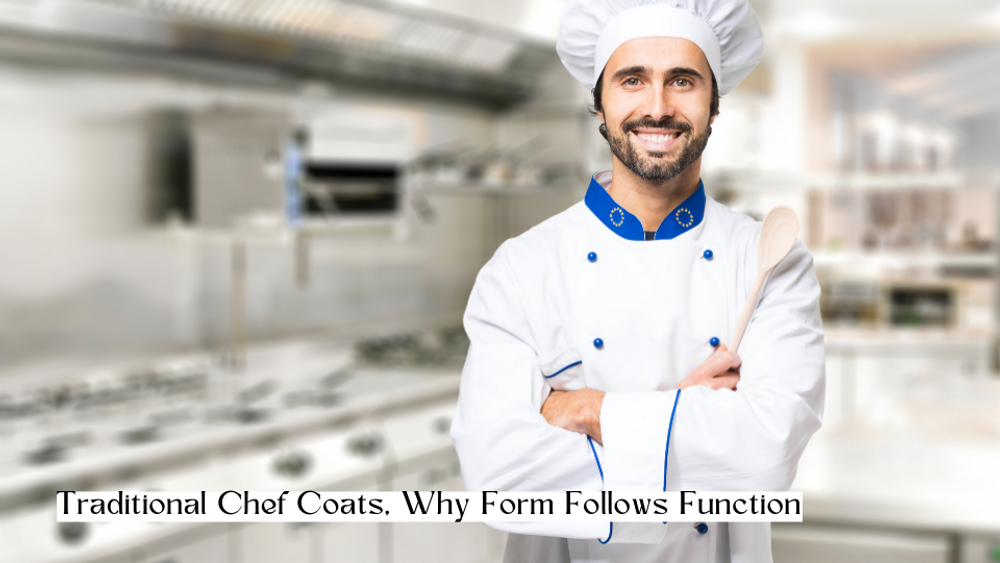When thinking of chef coats, you probably aren’t thinking about the “whys” in which it was made. The design of a chef coat is not merely just appearance, it follows a need for function and use. I’m sure you haven’t put too much thought into the wardrobe that the people who are making your food wear, but the excellence in the kitchen demands perfection not only in the food, but also in your appearance and function of that apparel.
The kitchen environment is a hot and dangerous place to work. Wardrobe is a very important factor to think about when working in the restaurant industry. Even though every restaurant varies in what they require their staff to wear, most chefs usually have to wear a toque (chef hat), a coat, pants and an apron. Some restaurants even require a certain shoe or sneaker for slippery conditions.
Chef coats are probably the most crucial item to wear in the kitchen atmosphere because they were designed to protect the chef in more than one way, allowing them to easily function throughout the kitchen. Although there are short sleeve and three quarter length coats now, the traditional long sleeve, heavy cotton material was originally designed to prevent the chef from burning their skin. With how busy the kitchen can be, cooks and staff don’t have time to monitor every move they make and they can get scorched, burned or splattered on.
Let’s talk material, color and cleanliness now. You may think the heavy cotton material would be unbearable to work in, but contrary to most people’s beliefs the material actually helps food preparers stay cool. Now why in the world would they want white in the kitchen you ask? The traditional white color was not a chance choice. The light color helps reflect any heat instead of absorbing it, leaving the heat in the kitchen and not on the cook. A second great thing about the white color chosen for coats, when it comes to washing it, you can bleach it to get all those hard to handle stains out. The classic double-breasted chef coats are ideal in the work place. Not only do they look higher end, they also act as a duel coat. If a chef gets dirty or stained, he or she can reverse the flaps for a whole new clean coat look. It’s a great way to hide those splatters and stains when having to go talk to a diner if need be.
Pockets, pockets and more pockets… why so many pockets? Chefs have lots of tools; we are talking tasting spoons, knives, thermometers and spatulas, etc. Traditional coats were designed for having strategically placed pockets for such items. Quick use while having the ability to carry multiple items is always a plus when it comes to a busy, multitasking cook.
Other things most people do not think about when considering their kitchen wardrobe are the buttons. You may think “why would buttons matter when purchasing a chef coat”, but they too, can suffer in the kitchen due to the high heat. Traditionally buttons were used on most chef wear, but that is slowly changing. The fact that buttons can fall off and even melt when near high temperatures has been leading to new and innovative ways in designing today’s kitchen staff wear.
There are a variety of chef coats out there to choose from, but it comes down to opinion and choice. Safety is the most important thing when it comes to the kitchen, other than the food of course. Make sure it’s the right fit and function for you and the way you feel cooking will be just as great as the way it tastes!

